ArtMarket® Insight, tutte le news del mercato dell'arte
Indice ArtMarket® Insight
Auctions in February 2008: the new rhythm of contemporary art [29/01/2008]
New schedule! Traditionally the two giants of global art sales – Christie’s and Sotheby’s – organise their auctions of impressionist and modern art followed by sales of post-war and contemporary art in the same week.
Artprice is launching “Art Market Confidence Index”®, a real time index which measures how confident art market players are feeling. [27/01/2008]
This real time confidence index is built on the same theoretical bases as the Michigan Consumer Sentiment Index of the Survey Research Center at the University of Michigan which is a benchmark for global stock markets
The speculative bubble in the art market reaches its peak in November 2007 [21/01/2008]
The art market recorded a 7th consecutive year of price rises in 2007. The annual increase at global level amounted to +18%. It was accompanied by Fine Art proceeds of USD 9.2 billion, an increase of 43.8% over the year, swelled by the proliferation of million-ticket sales, auction hammers having come down on 1,254 sales of over USD 1 million in 2007, compared with 810 in 2006. 2006 had already recorded an unprecedented number of transactions and 2007 was an exceptional vintage.
Artprice Engine® is launched [14/01/2008]
On 15 January 2008, Artprice is launching Artprice Engine®, the search engine at the heart of the Artprice Catalogs Library®. Artprice holds the largest archive of auction catalogues in the world (290,000 catalogues dating from 1700 to the present day). Artprice has also added to this resource through the acquisition of major art market information databanks (Bayer, Mayer, Mireur, Van Wilder, etc.).
French Impressionism [30/12/2007]
While they were denigrated at first, these days the French impressionists enjoy an unparalleled reputation. Influenced by the scientific discoveries of their day, particularly by Eugène Chevreul’s law of colour contrast, they juxtapose their colours in free brush strokes, paving the way for abstract art.
XVIIth century still life paintings – the golden age of Northern Europe [19/12/2007]
The XVIIth century was a golden age for still life painting in Northern European countries from which two themes emerged: table settings and floral compositions. The paintings of the XXIIth century Northern Schools have proven a profitable refuge, with price levels rising by +85% in a decade. It is also a field of informed collectors who are hugely selective.
François Boucher – the Libertine century in vogue [13/12/2007]
One of the foremost artists of the XVIIIth century, François Boucher’s (1703-1770) rise to art market fame was rapid since, by the time he was twenty, his work had been awarded the prestigious Grand Prix de Rome.
Richard Prince [09/12/2007]
The Richard Prince retrospective, showing at the Guggenheim museum in New York between 29 September 2007 and 9 January 2008, proved a sale-boosting tribute, with Prince prices rocketing in November!
Modern sculpture at a high [06/12/2007]
In the modern period, prices for sculpture have been rising faster than those of painting, with the price index for sculpture reaching a new high in 2007, growth of 100% in 15 years!
Sotheby’s invites Bacon to Paris [03/12/2007]
After the 2001 auction reform, a number of French auction houses feared they might find themselves relegated far behind the leading international auctioneers. Faced with this possibility, some even chose to merge as did Artcurial- Briest-Le Fur-Poulain-F.Tajan and Tajan, in order to be able to stand up to Sotheby’s and Christie’s more effectively.
Swiss modern art [29/11/2007]
Notwithstanding the international appeal of works by Alberto Giacometti and Paul Klee, Swiss artists are most popular at home.
Cy Twombly – Passion at work [26/11/2007]
Cy Twombly rubbed shoulders with the expressionism of the American abstract artists during the 1950s but remained an artist on the fringe. His works appear like graphic eruptions, combining writing, drawing and numbers. They seem to be scribbled in haste, animated by a creative urgency exhibiting the unconscious… A complusive imperative which alludes to the automatic writing of the surrealist artists.
Contemporary art in New-York – Confidence reigns… [19/11/2007]
Art market players had been worried by the idea of a market downturn after the mixed results from the impressionist and modern art sales in New York on 6 and 7 November. However, one week later, the strong sales in the contemporary art sector proved that the market remains buoyant.
Photographic summits [15/11/2007]
From November 15-18, the Carousel du Louvre will be hosting the 11th Paris Photo, an essential event for collectors of vintage, modern and contemporary photos. On this occasion, 83 galleries will be presenting their selection. At the same time, Parisian auction houses like Piasa, Artcurial and Ader are organising various thematic sales. On the other side of the Channel in London, Sotheby’s and Christie’s are presenting a few hundred photos. This is the opportunity for Artprice to examine one of the most fashionable sectors on the market.
The market shows signs of flagging [08/11/2007]
On 7 November 2007, following an incredible 78.8% rise in three years, the New York art market seemed to show its first signs of running out of steam as the media-friendly “Impressionist and Modern Art” auction at Sotheby’s ran into a market correction, turning over just USD 269.7 million. Only two years ago, this would have seemed a fair result, but this year, given the expectations of the auctioneer, it smacks of disaster. The 76 lots on offer had been expected to fetch a staggering USD 355.6 million to USD 494.2 million, based on low and high estimates.
Louise Bourgeois – Art as redemption [08/11/2007]
Her oeuvre is celebrated in an exhibition at London’s Tate Modern until 20 January 2008, which continues at the Paris Pompidou Centre from 5 March to 2 June 2008, before moving to the United States.
Louise bourgeois is one of the senior figures of contemporary art. At 96 years old, she continues to produce her introspective and cathartic work, which explores human relationships, their suffering and frustrations.
Georges Seurat – drawings [06/11/2007]
Leading light of neo-impressionism and father of pointillism, George Seurat is being honoured by the MoMA (New York) until 7 January 2008 with an original exhibition entirely dedicated to his drawings. The exhibition strikingly reveals the technique Seurat used for producing black and white drawings on paper with an exceptional degree of luminosity. Indeed, it was one such drawing Portrait d’Aman-Jean that got the artist his first and only appearance at the Salon officiel in 1883. The following year, his painting entitled Une Baignade, Asnières was refused by the Salon!
Gustave Courbet – between realism and scandal [05/11/2007]
Born in Ornans in 1819, Courbet absorbed the painting trends of his era before liberating himself from the academism and the romanticism of his youth. Although his first works were characterised by sentimentalism, by 1848 his paintings had evolved towards a form of “austere” realism. Henceforward, the artist’s vision gained freedom as it moved away from idealisation towards nature in a broader sense.
The New York sales at new highs [28/10/2007]
On 6 and 7 November the two key sales of the auction season will take place in New York. Sotheby’s and Christie’s have assembled for the occasion a selection of important works by Paul Gauguin, Vincent Van Gogh, Claude Monet, Cézanne and even Franz Marc. To date, pre-sale estimates from the two auction houses have never been so high.
Jeff Koons – The promise of a foretold success [24/10/2007]
During the 1980s, Jeff Koons appropriated everyday consumer items such as vacuum cleaners, basket balls or various knickknacks. Unlike Duchamp who, with his ready mades, did not seek aesthetic delight in exhibiting mundane objects, Koons glorifies mass-made products in a Pop aesthetic. The American artist aimed to reach the widest possible audience in opting for popular culture…and the bet paid off. He is now not only one of the artists commanding the highest prices but also one of the most controversial!
CONCEPTUAL ART – The mind to the fore! [11/10/2007]
As Leonard de Vinci was already affirming, back in the XVth century, art is ‘Cosa mentale’, a thing of the mind. Five centuries after this premise, artists gave the concept precedence over the realisation of the work and the skill of the artist. The work became witness to an idea. Officially born in the 1960s, the conceptual trend is still around today, its tone neutral and the message clearly to the fore.
Surrealist photography – convulsive beauty [27/09/2007]
Surrealist photography was officially born in 1924 with the movement Manifesto by André Breton. The thirst for new experiences which inspired the surrealist oeuvre sustained the exploration of the photographic medium in various forms. Man Ray’s solarization involving exposing the negative to light, Raoul Ubac’s brûlages, Pierre Molinier’s photomontages or André Kertész’s mirror effects are all examples of techniques which de-realise subjects and objects, giving them an element of mystery…Surrealist beauty is irrational and coincidental, marvellous and convulsive.
Video art – the moving image [19/09/2007]
The artist, according to Wassily Kandinsky’s time-honored expression, is ‘the child of his time’. So what could be more normal than to appropriate contemporary technologies, in addition to the images and ideas of one’s era. The boom of television during the 1960s awakened artists, in the United States as in Europe, to the possibilities of a ‘video art’. For nearly fifty years, artists have been exploring the many qualities video has to offer in terms of manipulating the image, narrative power and the temporal dimension.
Free Figuration – Art without complex [13/09/2007]
Free Figuration is humour, spontaneity, an uncomplicated language of the people. The birth of the movement dates back to 1981, when Bernard Lamarche-Vadel showed the works of Rémy Blanchard, François Boisrond, Robert Combas and Hervé Di Rosa in his Paris apartment. What do these artists have in common? bright colours and a refreshing style, inspired by cartoons, advertising and daily life….universes accessible to everyone, well away from any artistic elitism.
Bad painting – In praise of “bad taste” [04/09/2007]
Bad Painting emerged in the United States at the end of the 1970s and flourished in the 1980s. The “Bad boys” of painting are Jean-Michel Basquiat, Neil Jenney, Kenny Scharf, Julian Schnabel, Malcolm Morley, David Salle, Jonathan Borofsky and Donald Sultan. They glory in the bad taste of their work, draw inspiration from fringe and popular culture, introduce various materials into their paintings, and play on excessively thick layers and clashing colours. This reversion to expressionism in painting staked out its territory in opposition to the period’s established codes of austere minimalism and conceptual art.
Shcontemporary : a new art fair is born in Shanghai [03/09/2007]
Shanghai and Beijing are the new centres of attraction: galeries are proliferating there and collectors from the world over are invited to discover in situ the dynamism of the Asian scene, encouraged by the effervescence of Chinese art, whose sale proceeds were multiplied by ten in 2006.
Animal sculpture [27/08/2007]
In the 19th century, art lovers fell for a new form of sculpture where the animal was king. Animal sculpture is still popular today with price levels up by 100% over the last 10 years.
Keith Haring- Using the streets as a laboratory [12/08/2007]
At the beginning of the 1980s, Keith Haring chose a direct and alternative mode of expression at the heart of the urban landscape. Between 1980 and 1985, he produced hundreds of drawings in the streets and subways of New York, working so frenetically that he sometimes turned out more than 40 drawings in a single day. Haring wanted to reach a wide public and so developed a synthetic, energetic, and rhythmic graphic style that feeds on pictograms, and is inspired by graffiti, cartoons and comic strips. The Haring “style” rapidly became one the most popular visual languages of the 20th century.
Jörg Immendorf [05/08/2007]
Jörg Immendorff started out in landscape painting, studying with Theo OTTO, before joining the Art Academy in Düsseldorf under Joseph BEUYS. He launched the LIDL movement in 1968, which was censored by the Ministry of Culture the following year. He was thrown out of the academy as a result of the controversy. This incident propelled Immendorf into the big league, and by the time he was featured in documenta 5 in 1972 he was already considered a major artist.
Old Masters [29/07/2007]
Old masters are the pride of the most prestigious museums and a few collectors who are loathe to part with their masterpieces. A shortage of works, and the tempting prestige of a famous signature, means some paintings, but also drawings, are fetching spectacular bids. However, art lovers can turn to signatures that are less famous with the general public or drawings and prints that are everywhere on the market.





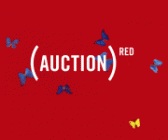
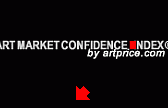
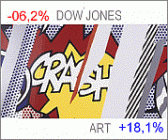
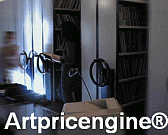
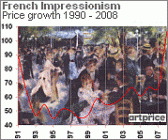

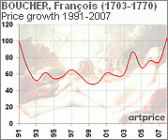

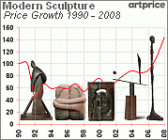
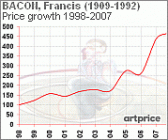
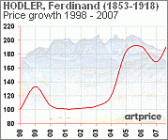
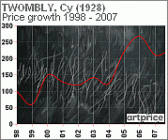
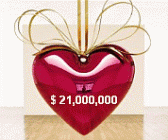
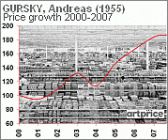
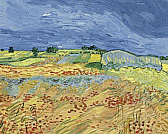
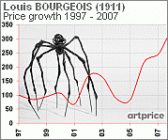
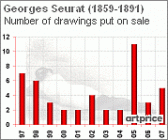
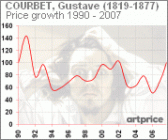
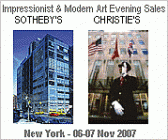
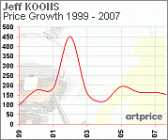

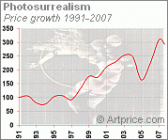
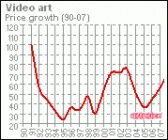
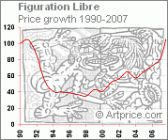
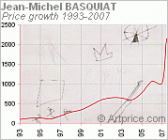
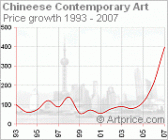
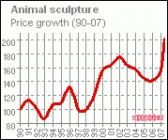
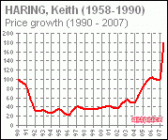










 0
0
